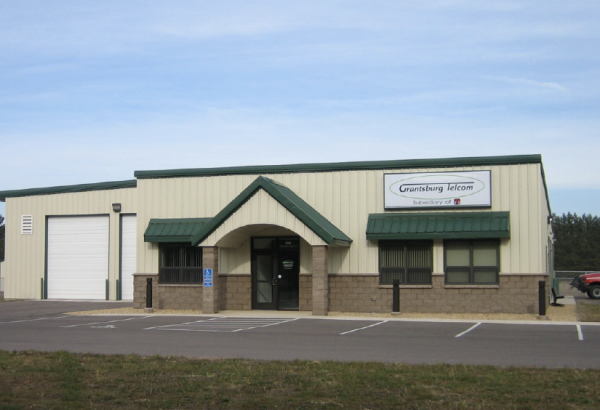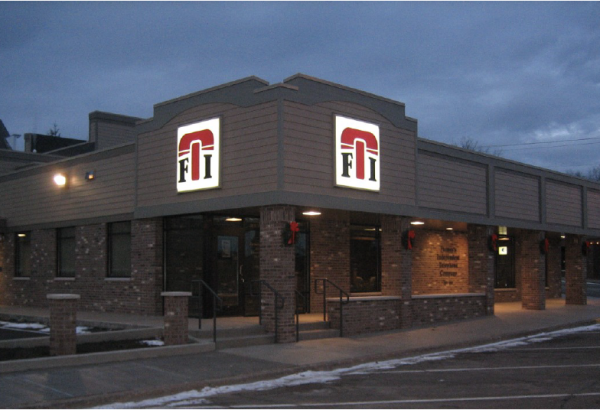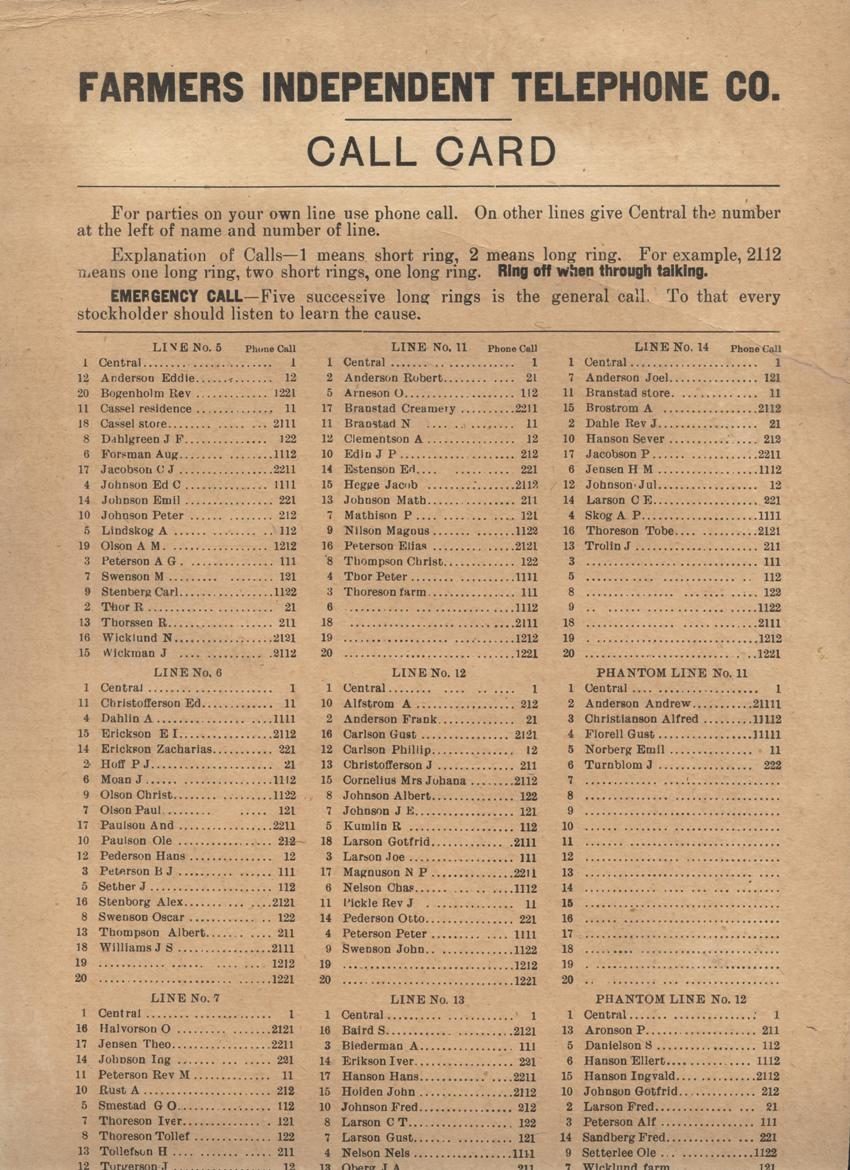We go way back.
History
Recent Highlights
- During the past several years we have upgraded the broadband network throughout our serving area from copper wire to fiber-optic cable which is capable of delivering symmetrical download and upload speeds up to 1Gbps to allow residential users to stream entertainment and connect to family and friends online. Our state-of-the-art network and natural surroundings of northwestern Wisconsin are the perfect combination for establishing a successful work from home business or remote work role in an organization.
- Through partnerships with the state of Wisconsin Broadband Office, Burnett and Polk Counties, and several local municipalities, we have been fortunate to receive broadband grants that have allowed us to deploy fast, reliable broadband service to many underserved and previously unserved locations throughout Burnett and Polk Counties.
- To reduce duplicative bookkeeping procedures and other soft costs, the Board of Directors approved the merger of Farmers Independent Telephone Company and its wholly-owned subsidiary Grantsburg Telcom, effective Dec. 31, 2020. Although our official name has always been Farmers Independent Telephone Company since way back in 1907, we are known by our customers locally as Grantsburg Telcom.
- Our business voice service which utilizes IP-enabled phones, continues to grow exponentially. With enhanced 911 service, business customers with multiple locations or remote staff can be assured that emergency calls to 911 from our hosted IP phones, in combination with the administrative portal, will connect to the nearest 911 dispatch center, even if the devices are located in another county or state.
50 YEARS OF PROGRESS 1907-1957
The Early Beginnings
It all began years earlier than the January 22 meeting on 1907. That was when your company had its first formal beginnings at a meeting in the Grantsburg Town Hall. Taking a look at what led up to this meeting, it is necessary to see things in retrospect.
It was in 1875 that Thomas A. Watson and Alexander Graham Bell were associated in development of improvements for use of the then popular communications device known as the telegraph. Bell had in mind an expansion of that service by the “Harmonic Telegraph”, which would have permitted several simultaneous messages to be sent. Had he not been working on that project, the phone might have come along somewhat later.
Bell said “If I could make a current of electricity vary in intensity, precisely as the air varies in density during the production of sound, I should be able to transmit speech telegraphically.”
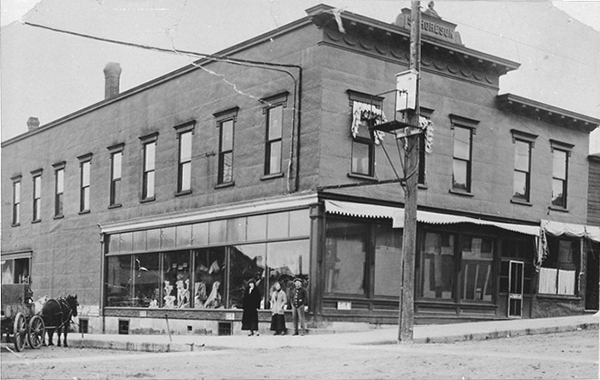
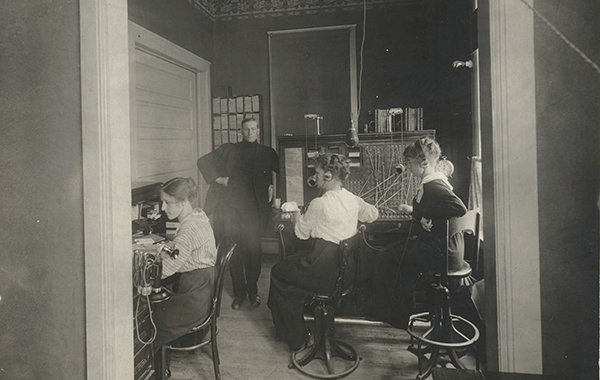
Actual voice transmission electronically over wires was on June 2, 1875, and not too much later a message that has made history was one from Bell to his associate two stories below, “Mr. Watson, please come here, I want you.”
The new invention was deeply involved in controversy, so that when phone service came to Grantsburg in 1900, brought by the Minnesota Mutual Telephone Company, much was still to be discovered in the kinds of technology that later came on the scene.
Long distance service was brought from Rush City by the Mutual Company and a phone booth installed in the Nordal C. Unseth drug store, in the fall of 1900. It was only a year later, in 1901, that Consolidated Telephone and Telegraph Company built a long distance line into the village from Pine City, to a booth in the Antlers hotel.
Competition soon moved the two companies beyond phone booth service, so lines went up and then switchboards to offer local service. The “Central Office” for Mutual was upstairs in the Simon Thoreson store building, with Rex Ahlstrom as manager. Consolidated had its exchange in the upstairs rooms of Gust E. Johnson’s residence, with Aug. J. Christianson as the local manager.
When Mutual put up 40-foot poles on the south side of Main Street, Minnesota had to put up 50-foot poles on the north side, so wires could be strung over the top of those in the competition. Consolidated relocated their switching facilities to an upstairs area of the Anderson and Gudmanson building on Main Street.
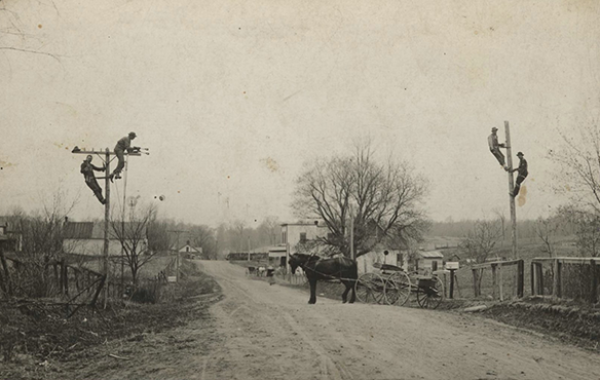
The county court house received its first phone service in 1902 when Consolidated made a proposition to service offices of the county clerk, register of deeds, and the jail, all on one line, at a cost of $1.25 per month, and with fee service on lines in the county. The board gave this matter a green light.
Minnesota constructed a line from Grantsburg to Blanding post office, the Lewis Anderson residence on the Mudhen Lake, and from there to the Edwin Nelson store on Doctor’s Lake. The line continued on to Krueger post office, the Joe Peterson residence south of Webster, and to the Robert Magnuson store on the edge of the present village of Webster.
Minnesota Mutual sold to Consolidated, who discontinued their exchange and took down the 50-foot poles. There was now one exchange, upstairs in the Thoreson building, where it remained for many years.
Consolidated constructed lines to various points, such as Branstad, Four Corners, Trade Lake, and Atlas. Long distance lines were strung to Frederic and Luck. Farmers were slow to receive any service. Changes continued, with Tri-State buying out Consolidated, and later the entire operation was sold to the American Bell Telephone Company.
Farmers Getting Anxious
Because emphasis was on community centers, and very little attention paid to providing individual rural service, 28 farmers and others met to discuss taking action. Those attending the mass meeting January 22, 1907, in the Grantsburg Town Hall.
Rev. R. J. Meland was elected chairman, and Andrew Paulson secretary of the meeting.
The first meeting organized the territory south and east of Grantsburg into four divisions. Each had three committee members. Todias Thoreson Division: A. P. Skog, John P. Edin, and A. Clementson. Wood Lake Division: Rev. R. J. Meland, Theo. B. Jensen, and P. F. Biederman. Quarter Line Division: C. E. Larson, N. M. Nelson, and Math. Johnson Falun Division: John Christopherson, Alex Stenberg, and Hans Peterson. At the February 5th meeting, August Cassel and John E. Johnson were added to the Falun Division.
The second mass meeting was called and held at the Grantsburg Town Hall February 5, 1907, when it was voted unanimously to proceed with organization of the Divisions into one Company.
Constitution Adopted Feb. 12, 1907
Proposed Constitution and By-laws were presented by committee members Meland, Huth, and R. C. Anderson, when a meeting convened February 12th.
The farmer group again met at the Grantsburg Town Hall, two miles south of Grantsburg village. With a few minor changes, the Constitution and By-laws were approved, and the Farmers Independent Telephone Company became a reality. Following adoption, rules were suspended, and officers and directors were named by voice vote: Rev. R. J. Meland, President; Robert C. Anderson, Vice President; F. R. Huth, Secretary; Emil Swenson, Treasurer; and August Cassel, Hans Peterson, Chas. E. Larson, Christian Olson and Tobias Thoreson, Directors.
After Company organizing, the following members signed up to take stock in the Company: Emil Swenson, August Cassel, J. H. DeGraw, P. J. Johnson, A. P. Skog, Jonas Wagenius, Hans Peterson, Richard Kumlin, Tobias Thoreson, Joel Anderson, Chas. E. Larson, Hans Hauger, John E. Johnson, Emil Johnson, Christian Olson, Alex Stenberg, S. N. Hanson, Peder Dacobson, Math. Johnson, Robert C. Anderson, Rev. R. J. Meland, F. R. Huth, and P. A. Peterson.
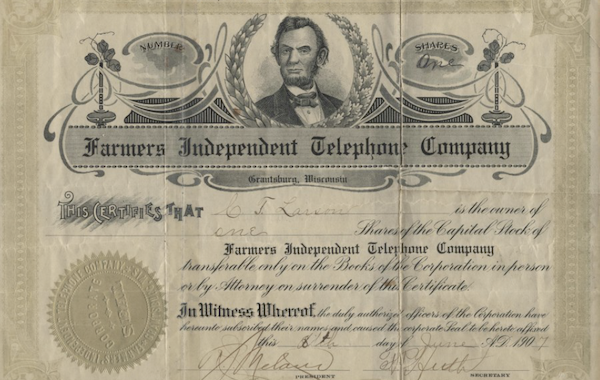
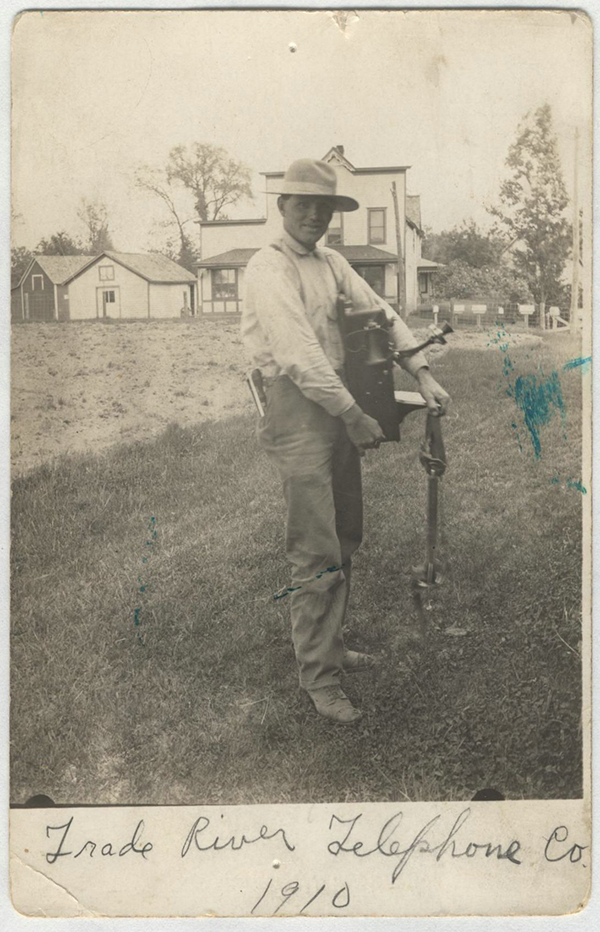
Telegraph and Telephone Company for switching between Farmers Independent customers and those on the Tri-State lines. Customers of Tri-State were charged $2.00 annually to talk to members on the Farmers Independent lines.
By May 11, 1907, the following had subscribed for stock in the Farmers Independent Telephone Company. Shares were at a par value of $20.00, which at that time was a substantial amount of money. With sufficient stock pledges, incorporation of the Farmers Independent Telephone Company proceeded with $4,000 Capital Stock. Robert C. Anderson was elected by the Board of Directors as supervisor of construction at $2.50 for a 10-hour day. Common laborers’ wages were set at $1.50.
Line building began in the southern portion of the Town of Grantsburg, north portion of the Town of Anderson, the Town of Wood River, and the west portion of the Town of Daniels. Lines were terminated in the Village of Grantsburg, where arrangements were made with the Tri-State Telegraph and Telephone Company for switching between Farmers Independent customers and those on the Tri-State lines. Customers of Tri-State were charged $2.00 annually to talk to members on the Farmers Independent lines.
Tri-State were charged $2.00 annually to talk to members on the Farmers Independent lines. At the second annual meeting, held February 13, 1909, it was voted that the rental assessment be set at 42.00 for each phone or stockholder. After two years of operation, the Company had more than 200 farm telephones connected to their lines. The Trade River area had been seeking connection of their area into the Farmers Independent system, and after postponed consideration of the matter, they decided to organize separately. On approximately the 26th of April, 1909, the Trade River Telephone Company was organized, with stock selling and line building going on in the summer of that year.
The first shareholders of the Trade River company were G. N. Gullickson, F. L. Swenson, Frank Lindgren, Oscar Magnuson, Helmer Ramstrom, J. F. Johnson, B. H. Swenson, C. E. Beckstrom, Christ Borup, Gust Hoffman, Chas. Wallin, Hjalmer Swenson, August Anderson, Chas. Magnuson, and Perry Magnuson. The first company officers were: Gust Hoffman, President, and Hjalmer Swenson, Secretary-Treasurer.
Trade River lines were build in the north portion of Sterling, and northwest portion of Laketown in Polk County, and the west portion of Trade Lake and east portion of Anderson in Burnett County. During the first two years, lines were terminated at the Trade River Store, operated by Chas. Anderson, who had connections with Tri-State in Grantsburg.
Mr. Anderson would relay calls originating in either of the lines to members on the other line. A switch was later installed to permit direct connection between parties from the two companies, at the Anderson store. This was not an entirely convenient way of conducting telephone conversations. It was, however, typical of early communications problems.
Trade River, Farmers Independent, Join
The Trade River company expanded to serve Bass Lake area, and finally continued lines into Grantsburg for termination at the Tri-State switchboard. Continued growth showed the company with 95 subscribers on five lines by the end of 1920. A year later, January, 1921, the Trade River company stockholders voted at their annual meeting to join the Farmers Independent Telephone Company, effective February 1, 1921, by acceptance of Farmers Independent.
Officers elected to represent the Farmers Independent after consolidation were: Paul C. Olson, President; LeRoy Tollander, Vice President; Albert C. Swanson, Secretary-Treasurer, and William Lindgren, Christ Thompson, and Ed. C. Paulson, Directors. Arthur Swanberg was hired as lineman February 7, 1921.
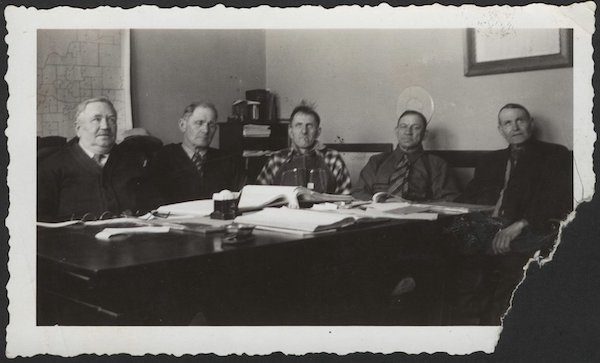
Good years of operation and growth were soured by a depression and a time of financial troubles. In the early thirties the number of subscribers diminished. To help overcome problems that followed the crash of 1929, Farmers Independent established their own Central Office one-half mile east of the village on Highway 70, on the Arthur Swanberg farm.
The first Chief Operator was Mrs. Harry Nelson. The Farmers Rural Central Office switched their own patrons in addition to serving Burnett County Telephone in the Freya, North Fork and Karlsborg areas. They also serviced the Tennessee Telephone customers who were west and northwest of Grantsburg.
Wisconsin Telephone, which had purchased the Tri-State company, furnished the balance of the exchange service to subscribers of Grantsburg Village, the Logging Creek and Marshland telephone companies. Circuits connected to two switchboards to permit conversations between customers of the various lines. The depression years wore on, and Farmers Independent survived.
Farmers Independent continued operation from the rural switchboard until October 15, 1936, when Wisconsin Telephone Company sold to the local firm and they moved back into Grantsburg. Since that time the entire area phone service has been operated by the Farmers Independent Telephone Company.
Plans Made for Funding an Expansion of Service
In September of 1937 the former First Bank of Grantsburg building just south of Madison on Oak was purchased with the intension of setting up a new switchboard. Application was made to the Public Service Commission for authority to install a common battery switchboard, and to make other improvements.
July 12, 1951, authorization was given to purchase and install common batteries instead of magneto, to place in service other associated equipment inside and outside the plant. The Exchange switchboard on common battery operation was placed in service February 6, 1954. It was a successful cutover to what was to be the first major service improvement.
The next step to complete extensive improvements of local and rural plant was more rural cable, line, wire, poles, brackets, etc. A careful study of these costs was made with the intention of reducing the number of customers on rural lines to no more than eight. Much more money was required to do this than had been anticipated.
The picture was further clouded by the Wage and Hour Division of the Federal Government ordering a new raise in the minimum wage from 75 cents to a dollar per hour. This proved to be a strong factor in decision making of the company.
The Board decided to investigate securing an REA loan, and stockholders voted May9, 1954 to have the preliminary work done.
At the annual meeting Feb. 14, 1956, stockholders voted 167 to 10 in favor of applying for an REA loan and the subsequent rebuilding of the entire facility. The Board of Directors was authorized to proceed with arrangements necessary to negotiate a loan with the Rural Electrification Administration, Washington, D. C. An area survey and design of plant would be prepared for submission to REA.
Purpose of the loan was to establish dial telephone operation within the service area, and to include provisions for switching, with companies at Webster, Siren, Frederic and Luck, which had their lines terminating at Grantsburg.
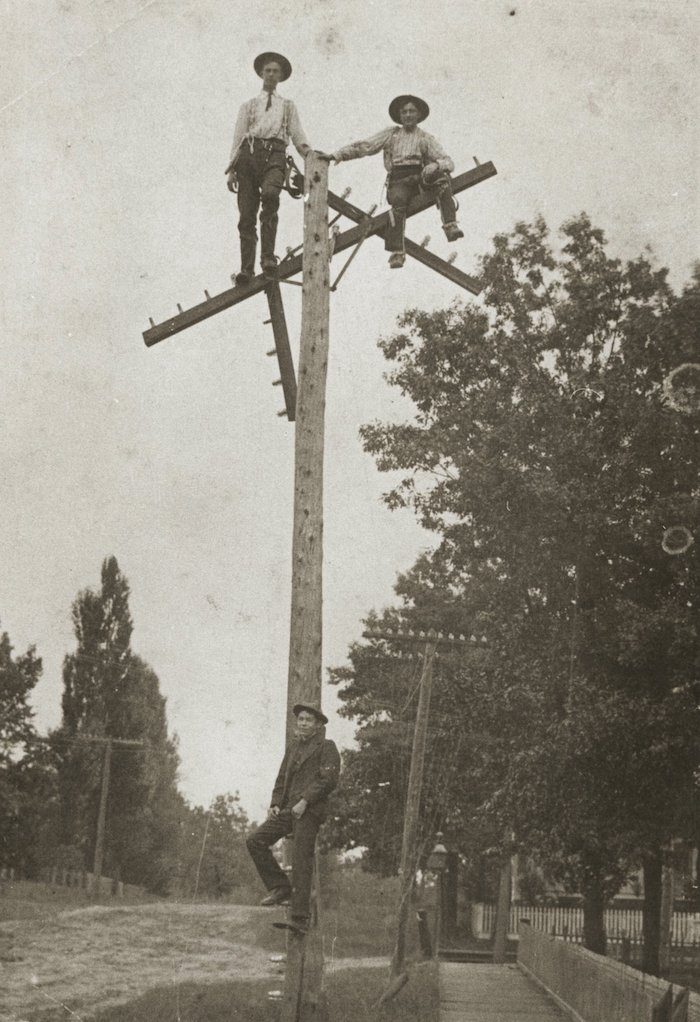
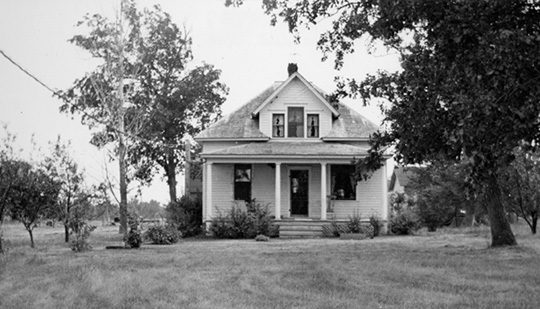
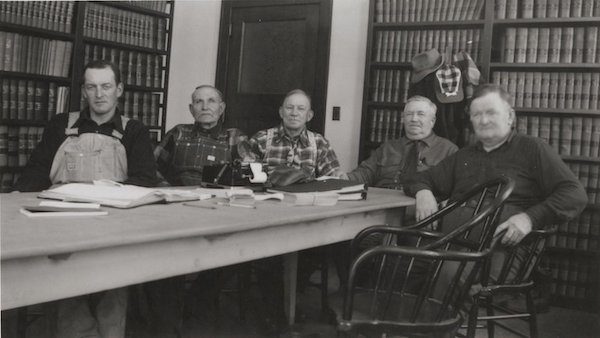
75th anniversary - 1957-1982
Engineering Study Undertaken
Scott Engineering of Watertown, S. D. was secured to do the very large amount of planning in the project. Meetings were held with neighboring companies that would be affected. Surveys and appraisals were done. This led to a new design that would include three separate exchanges within the system, at Falun, Trade Lake, and Grantsburg.
At the annual meeting in 1956 by-laws were amended to increase the number of shares. Up to that time only 400 shares were authorized. An increased number of shares would give equity needed to allow the REA to act on the half-million dollar application.
The information required by REA was extremely extensive, and it was necessary to make adjustments in the manner of doing business to satisfy them. Stock was too small in proportion to the loan request, and it became necessary to have the company’s first stock split to bring the percentages in to acceptable perspective. A three to one split was made.
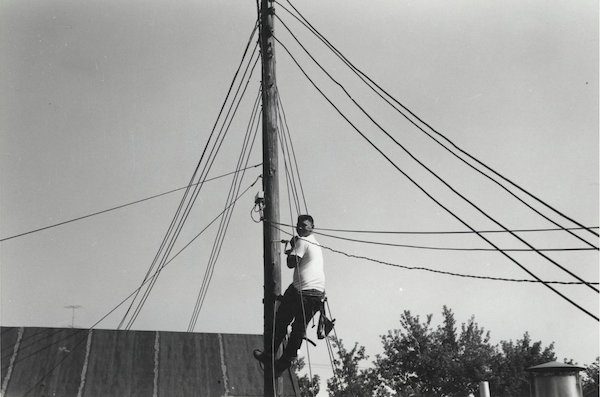
A letter from Washington dated June 12, 1957 not only gave approval for $492,000, but also indicated it was the 1,000th loan made by REA, and a significant milestone for the Rural Electric Administration in expanding telephone service in the rural areas of the United States.
Work began in earnest to accomplish what had now become a possibility. At the annual meeting in April of 1958 Manager Leonard Linden reported that a Central Office Equipment contract had been awarded to Stromberg-Carlson for $76,765.59, which would equip all three exchanges.
The annual meeting in April of 1959 heard a progress report that the main office building addition in the village, and two new buildings at Falun and Trade Lake were nearing completion, at a cost of $26,484.79. Central Office Equipment was in and ready to provide Dial telephone service. About 600 of the new phones had been installed.
Dial Cut-Over October 1, 1959
All 1017 telephones had been installed, and it was now time to put the new equipment to the test. All went very well, and customer’s were delighted at the vast improvement that had come from a long period of waiting. Operator service on every call was eliminated, and calls began to grow steadily in number.
A new manager, Claire Erickson, took over operation of the company in 1960. At that time there were eight long distance circuits.
The 1962 annual meeting heard a report of 60 new phones and 30 lines with 100 additional numbers in the central equipment. A 40 by 50 foot garage had been completed to house trucks, and Lillian Martinson was presented a gift of appreciation for 25 years of service. Two additional key systems, and two electronic secretaries had been installed. With dial service, customers realized increasing potential in telephones.
Growth Continues Through the Sixties
The 1963 report noted that as a result of an additional 70 phones, and an all-time high of 4,960 toll calls in one month, it became necessary to add one toll trunk to each of the exchanges, named
Mutual, Ivanhoe, and Homestead.
The next annual meeting was told of two-way radios being used to
speed service trucks in their continued efforts to provide top notch service. A four-wheel-drive truck was purchased for heavy jobs. McNally Brothers became users of Teletype service.
The magic number 1234 totaled the phones in service during 1965, which was Grantsburg’s Centennial, and a year packed with local activity. By 1966 toll trunks had been expanded to seven from Grantsburg, four from Falun, and three from Trade Lake. There were now six full-time employees, and an average of just over five parties on each line.
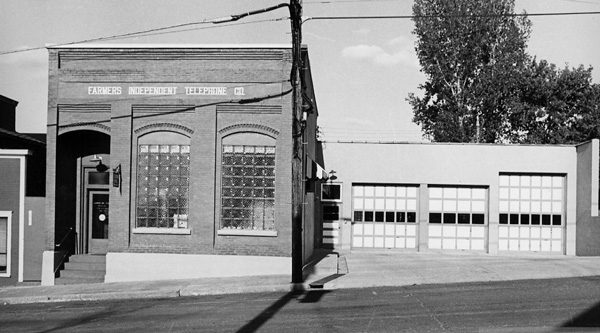
By 1967 the total phones in service reached 1359. The Laundromat (former Thoreson Store building which had housed the Central Office for many years), located to the north of the company buildings, was purchased for $4,500.00.
The company laid plans in 1968 to plow in new toll cable and service this area with toll calls, as a result of Wisconsin Telephone Company wishing to vacate their lines and service. One-party service and Direct Distance Dialing were then being discussed.
Manager Erickson reported in 1969 that cable delivery was delayed, presumably because of action in Vietnam which affected production. Indications were given that a total of 1500 phone stations would be operational before the year’s end. With the substantial growth it would be only a matter of time until further expansion becomes necessary.
The Seventies See $591,000.00 Expansion
Approximately 230 miles of wire were being buried in 1967 as progress was being made toward one-party service for the entire system. Nearly 6/10 of a million dollars was being spent to give the kind of service that was another vast improvement for the patrons of Farmers Independent.
Cut-over to the new service began with Grantsburg exchange being first, as a New Years Day gift to users of phones on the former Homestead exchange.
Mutual was next to be on on-party hookups beginning March 26, and Ivanhoe could only boast of being 90 percent complete when the April, 1971 annual meeting was held. Twenty long distance circuits were then connected for Grantsburg, twelve out of Falun, and eight out of Trade Lake.
The 1972 meeting heard a report of architectural planning for a new office building, which would be on ground level, at Madison and Oak.
The April meeting in 1973 saw work progressing on the 30 by 56 office quarters, which was completed during the summer. The number of phone customers was up to 1813 on March first.
Stockholders were advised at their 1974 meeting that the Board had acted under the directive of the 1973 meeting to limit the stock that any on stockholder could hold: up to three percent of the stock issued. Before the year was out, a record 2000 stations were being served by the company.
Noteworthy in 1975 was installation of a new PBX at the hospital, making it possible for patients to have phone service in their rooms. A memorial from the Albert Wicklund family in the form of a street bench was accepted with thanks. Albert had maintained an active interest in the company during his lifetime.
Little did the founding fathers of Farmers Independent dream, back at the start of things in 1907, that 69 years later there would be an obligation outstanding to REA of $1,018,051.00. The 1976 meeting also heard a report that heirs of two former stockholders had been located, and their stock recovered, to be placed in subscriber hands again.
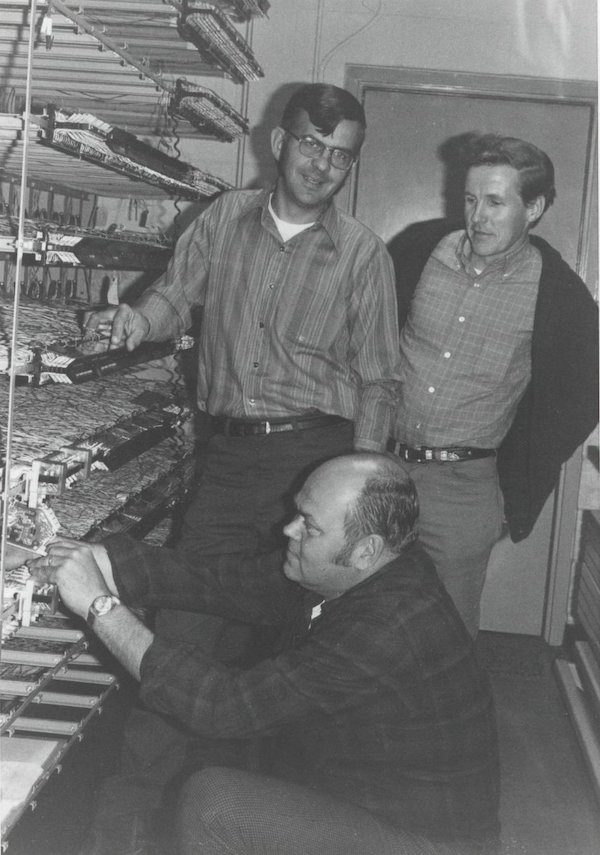
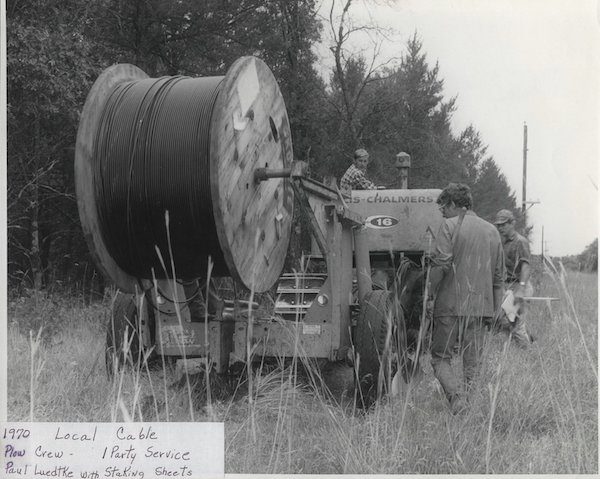
Mobile telephone service became operational in 1977, when it was noted that in 18 years there had been no rate increase, despite the fact there were extensive expenditures to upgrade plant facilities. The Grantsburg warehouse had a face-lifting, at its location where Crex Carpet Company once held sway.
The 2500 mark in phone customers was reached in 1978, when total business volume was recorded at more than $350,000.00. There were 12 mobile telephones and 22 pagers in service. A small pick-up truck was added to the company vehicles.
Stockholders received a 5% dividend in 1979, when it was reported that book value of each $20.00 share was $28.04 at the year’s beginning. The last telephone pole of the early era of company growth was taken down, and no more poles stood in the village.
May 20, 1980 was the date operators no longer were working in this area. Frederic had been providing long distance quarters for some time, but it was now centralized for a larger segment of the state in Eau Claire. Manager Claire Erickson was presented a plaque by President Johnson honoring him for 25 years in that capacity. Claire had been employed by the company five years before becoming manager. The company missed out on a chance to buy the Siren Telephone Company when Shell Lake came in with a higher bid.
Manager Erickson was unable to attend the 1981 annual meeting because of heart surgery. Falun was nearly cut over to underground. Poles were coming down.
The Seventy-Fifth Anniversary Year
The farmers Independent Telephone Company has now reached its diamond anniversary-1982. It is a time to celebrate, and invitations go out to participate August 11th in a noon banquet with all the trimmings, under tents put up in the parking lot especially for the occasion.
Four private electronic switchboards were installed during the past year. $40,000 in Central Office Equipment has been purchased. A new plow was secured at a cost of $27,000, and 15 miles of cable were dug in. Touch-tone service is available in the Grantsburg and Falun exchanges.
Book value of stock is now more than double par, at $47.25 per share. There are 208 stockholders holding 13,836 shares, with par value of $276,720.00, and book value of $638,483.00.
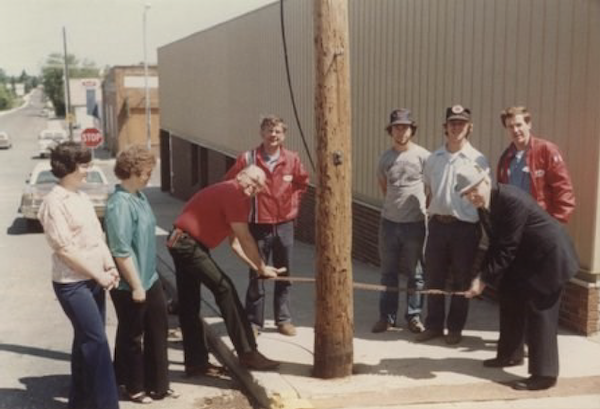
This anniversary year was witness to the 3,000th telephone being installed during January, and this has increased to nearly 3,100 at mid-year. From a total of four long distance toll circuits in the early years, an addition of 24 this summer has made this number climb to over 100. Even then there are times when all of the long distance lines are busy.
Installation of carrier, which permits multiple message handling on less wire, has made possible a kind of service that would otherwise not exist. With this capability, twenty-four messages travel on only four wires.
In four or five years the prediction is that all the mechanical switching will become electronic, and equipment that now fills a very large room will be replaced by what could be hauled in a station wagon. A whole new set of services will then become available to enhance an already good company.
the call card
A Return to Operations in the “Early Days”
A Call Card from very early days in Farmers Independent operations shows some interesting facts of operations at that time. Instructions included: For parties on your own line, use phone call. On other lines give Central the number at left of name and number of line. Explanation of calls: 1 means short ring; 2 means long ring. For example, 2112 means one long ring, two short rings, one long ring. RING OFF WHEN THROUGH TALKING.
Emergency call: Five successive long rings is the general call. To that, every stockholder should listen to learn the cause.
A portion on one such Call Card is shown below.
1983-2007
A revolution has occurred that has changed our industry from a telephone company to a communications company. The start of this revolution began in 1984 when the Federal Government said that AT&T would no longer be in control of all the telephone traffic that occurred outside of a local telephone company’s exchange. AT&T was broken up into eight units. AT&T was in charge of long distance traffic but telephone traffic that occurred within a state’s boundaries was divided into seven Bell territories. (SW Bell, Bell Atlantic, US West, Ameritech, Pacific Telesis, Nynex, & Bell South) Change was also rapidly happening on the technology side. We moved from a mechanical switch to a digital switch in 1987. This enabled us to offer many more calling features to our customers. In addition to this the digital switch was much easier to run and maintain.
In 1988 with manager Claire Erickson having some health problems, it was decided to hire Dana Olson as assistant manager to help Claire with the operations of the company. One of his first projects, was with a consortium of ten other companies (Amery Telephone Co, Luck Telephone Co, Milltown Mutual, Shell Lake Telephone Co, Turtle Lake Telephone Co, Citizens Telephone Co, Chibardun Telephone Co, Clear Lake Telephone Co, G.T.E., Cencom Telephone, North-West Telecommunications and Universal Telephone Co.) to try and secure a wireless spectrum license that would cover Burnett, Polk, Washburn, and Barron counties. This license was secured in 1989 and was used to provide cell phone service over the four county area. This service is currently marketed under the name of Alltel. Cell phone usage has grown dramatically over the last decade. 2004 marked a major mile stone in the cell phone business. This was the year that there were more people in the world that owned cell phones than the traditional wire-line telephone.
Change continued to roll on in 1991. The Federal Government under the Equal Access ruling opened up AT&T’s network for other long distance carriers to enter the market. We had to ballot all of our customers to determine if they wanted AT&T, MCI, Sprint, or one of several other companies listed on the ballot. At one time there were over a thousand different carriers serving Wisconsin.
Farmers Independent Telephone Company was saddened with the death of long time manager Claire Erickson in April, 1991. Claire served as manager from 1960-1991. At this time, Dana Olson took over the position of general manager.
With the advent of digital switching, more product and services were available. One of these services was the use of 911. Burnett County implemented an E911 system in September, 1992. The E stood for enhanced. This meant that whoever dialed 911, the name and address of the location from where the call was placed would appear on a computer screen in the sheriffs office. When the county was testing the system, a real 911 call came in. The man’s only words were, “I have a fire in my garage” and then hung up. The name and address of a Grantsburg resident appeared on the computer screen and the fire department was summoned to the site. The hardest part of establishing the E911 system was not the technology side, it was the county had to establish a new addressing system for the whole county. All roads had to be named and every house had to have a number.
Technology continues to evolve. A new product has been out for a few years called fiber optic cable. It uses strands of glass instead of copper wires as a transport medium. Light waves are shot down these strands of glass instead of a small amount of electrical voltage as used on copper wires. Electrical voltage needs to be balanced every 4500 feet on copper wire. The light wave can travel 150 miles before it needs to be regenerated. One strand of fiber can carry as much as 600 pair of copper wire. Farmers Independent Telephone Company put its first fiber optic cable into service in 1995. The first project consisted of linking Farmers Independent Telephone Company with Siren Telephone Company. Over the years we have continued to deploy fiber optic cable. We now have in excess of 100 miles of fiber that crisscrosses our service territory. Our fiber backbone network is a redundant network ring. This means that if we have a cable cut on the backbone ring, any services traveling down that ring are automatically rerouted over another fiber optic path to get to their destination. By preventing these type of outages our customers enjoy a higher quality of service that they can depend on.
In addition to this, Farmers Independent Telephone Company joined a consortium of other small telephone companies that have joined their fiber optic networks together to form a larger state wide network called Wisconsin Independent Network (WIN). This network has access to over 2500 miles of fiber throughout the state of Wisconsin. The network has made such services possible as video distance learning programs that the Grantsburg School system currently uses.
In 1995, Grantsburg Telcom was formed as a subsidiary to Farmers Independent Telephone Company. This new subsidiary meant we could participate in businesses that were not listed under a telephone franchise. Our first venture consisted of forming a partnership with Luck Telephone Company, Milltown Telephone Company, Amery Telephone Company, Clear Lake Telephone Company, and Baldwin Telephone Company to purchase Savage Cable Systems.
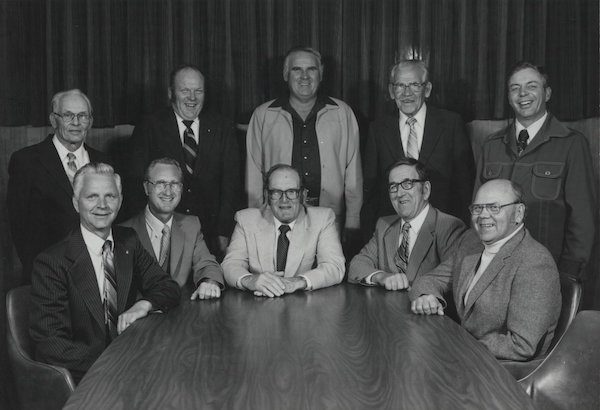
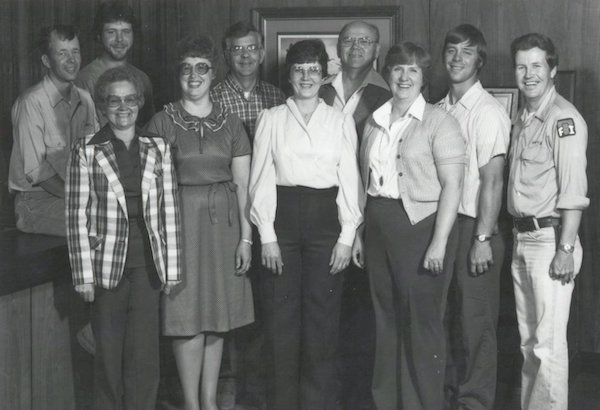
Savage Cable Systems owned and operated cable systems in eleven communities in northwest Wisconsin. Grantsburg was one of those cable TV systems. This new venture operated under the name of Vision Communications. Vision Communications continued to operate all the cable TV properties until 2002. At this time, upgrades were needed at all the communities. Grantsburg Telcom bought the Grantsburg Cable TV property from Vision at this time and upgraded the Grantsburg system.
Another major event happened in 1995. This is the year we started to offer Internet services. Nothing has changed the way business does business more than the Internet. Computers have been around for several decades, but the Internet provided a network that computers could talk to other computers across the world on a very inexpensive platform.
The Federal Government changed the landscape of the telephone industry in 1996 when the Telecommunications Act of 1996 went into effect. Eventually this act opened up the doors for local competition.
Grantsburg Telcom Long Distance was started in 1998. We thought we could provide a higher quality long distance service than some of the current providers. Within a couple of years, more than half of the tele- phone subscribers were using GTC for their long distance needs.
After a decade of high customer growth and many new products and services, we were out of space. Probably the area that needed space the most was our central office. New telephone customers, Cable TV equipment, and Internet equipment had us busting at the seams. The only logical way to expand was into our garage area. If we did that, what would we do with our vehicles? A long range plan was developed that has us in a 3 phase building program. Phase I was completed in 2004. This consisted of building a new warehouse/conference building in Grantsburg’s Industrial Park. With phase I completed, vehicles and supplies moved to the new warehouse and we started on phase II. Phase II was completed in 2005 and consisted of expanding the central office into the old garage area.
Phase III was a complete business office renovation and expansion. This phase was started in April 2006 and we moved into our new setting on November 1, 2006. Three years of construction was a long wait but by using the III phase program, we had very little service disruption for our customers. In the end we have a new facility that is filled with the latest technology and should meet our needs for many years to come.
